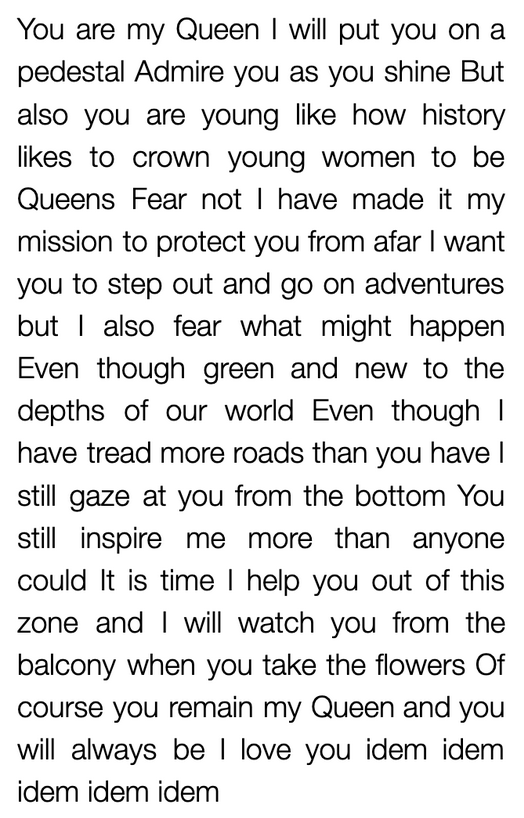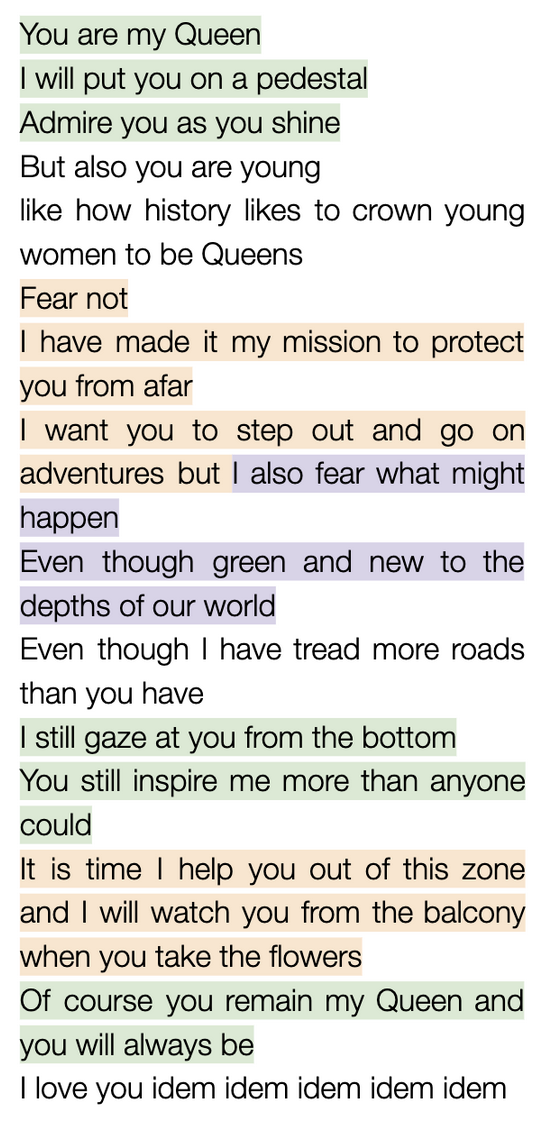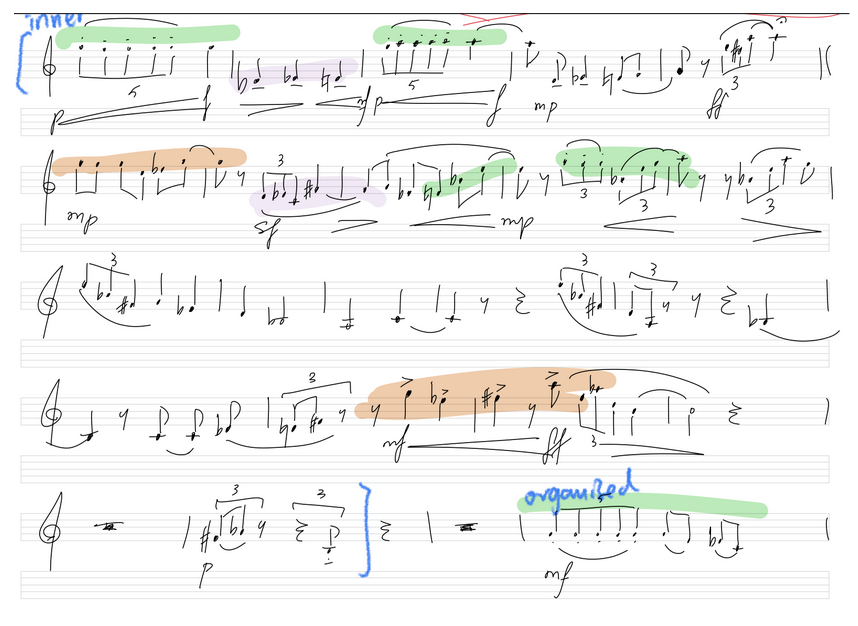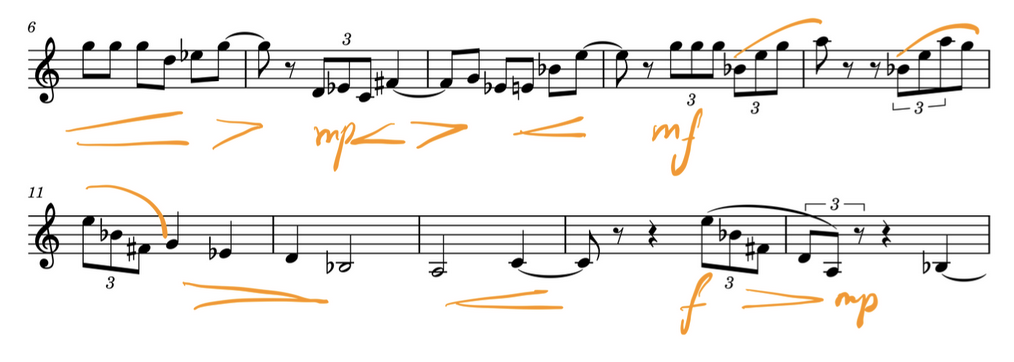
One day my friend called me “(my) queen”.
It was just an offhand comment but the more I thought about it something felt quite amazing. What does it mean to call someone queen, and what was the thought process behind it? Words like “elevation”, “look up”, and “admire” popped up into my mind.
That was a cool feeling, so I took it and explored it more. This is a workflow that I like for creating ideas: Get a simple thought and draw out tangents. Even though on the outside it might seem like blowing things out of proportion. To name someone queen, I thought, perhaps there is the idea of admiration, but also some sort of will to protect said person, and that will to protect stems from fear. Jamming these thoughts together, I created a stream-of-consciousness text, somewhat inspired by Joyce’s Ulysses:

After that, I examined the text and thought about how I can use it as inspiration/prompts for music. I separated it into three different themes – admiration, promise (to protect), and fear – using some colours.

That was enough prompts for the next step, which was to simply start writing. This time I treated music more like an abstract painting. The exact notes do not matter so much, in that the sound altogether is more important. A similar experience would be listening to a language that we do not know. And similar to spoken text, I had the idea of making the music sound like some sort of hurried, urgent speech - With phrases that were ongoing quickly; hurried breathing (pauses), scattered thoughts (small pieces of musical ideas), etc.
To me, one motivic idea for each prompt was a straightforward way of approaching it. I did not start out with pre-planned motives, however – I simply wrote in a stream-of-consciousness manner and, when I wrote something I liked, I took note of it and explored it as a motif.

Here are some beginning sketches that I made on iPad. Usually I sketch and write on paper so this was an exception. (The idea and writing was spontaneous and I was not with my composition paper, that was why) Nevertheless I had some ideas down, and then I colour-coded them. I also had the idea of depicting scattered vs. organised thoughts (hence the blue notes “inner” and “organised”), but ultimately I did not compose following this model of working.
Then, I finished the composition on paper and input notes into MuseScore. Afterwards, I added detailed dynamics using the IMSLP app (I sketch the dynamics by hand, and then put them into notation software).

This was pretty much how Coronation came to be.
One comment on the instrumentation: text has always been woodwind-ish for me. That is, woodwinds represent the spoken words to me. During writing, I had the saxophone’s sound in mind, but as I wrote more, the notes fell out of range of a regular alto saxophone, and I had the clarinet’s sound in mind more. Ultimately, the piece is intended to be performed by a woodwind. Something about breathing in musical phrases is intriguing (sure, pianists and string players also breathe with the music during playing, but the necessity to breathe and how it can strongly affect phrasing – yeah?) …